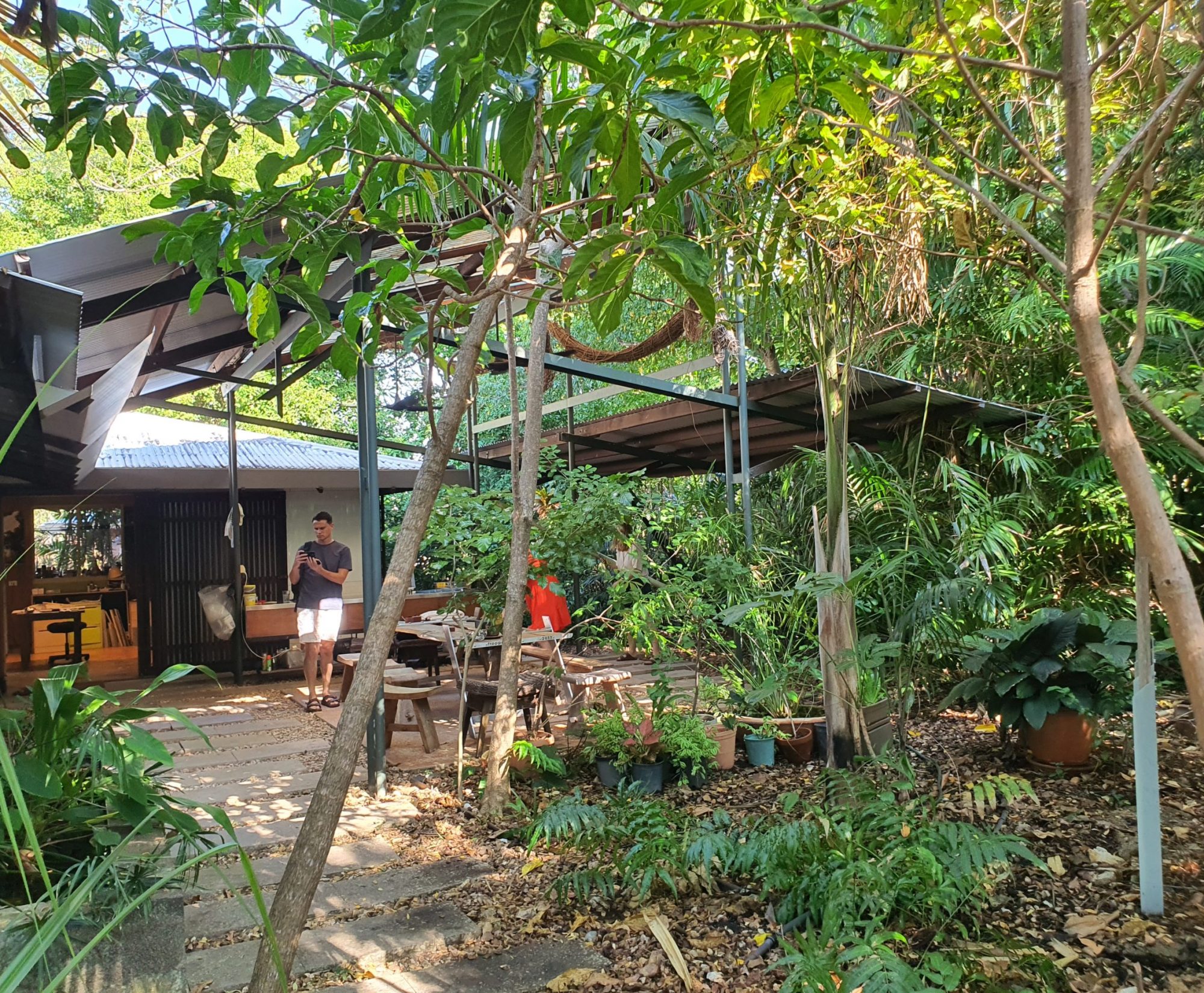
After a huge four days in Sydney, we woke early to venture north to Garrmalang/Garramilla (Darwin). For many of us, this was the first time we had touched down in this part of Australia and the 37-degree heat was an abrupt wake up! Our city footwear was unceremoniously replaced with flipflops as we settled into a slower pace for our two days in Darwin. We were met by the lovely crew from the NT AIA Chapter, Raquel, Karen and Rossi, who, embodying true Northern Territorian hospitality, took us under their wings and drove us to our first destination.
Departing the airport, the change in landscape was immediate. Striking Ghost Gums lined the highway as we made our way to George Brown Botanic Gardens. Seeking shade under a canopy of an Anbinik tree, the role of landscape in supporting everyday comfort in this part of the world became very apparent. Local Larrakia man James provided a warm welcome to country and stated “everyone is welcome on our land, we are the most multicultural city in Australia… you have come by way of the Larrakia Land. You will hear the voice of Larrakia ancestors. When you leave, the Larrakia message will stay with you”.
He went onto share a snippet of Darwin’s history and his personal story of witnessing his two storey family home reduced to rubble by Cyclone Tracey in 1974. “You cannot compete against nature” he said. With temperatures increasing and climatic conditions becoming more extreme each year, the Northern Territory is at the coal face of the impacts of climate change – further reiterating the intrinsic connection architectural work, climate and landscape have in this part of the world.
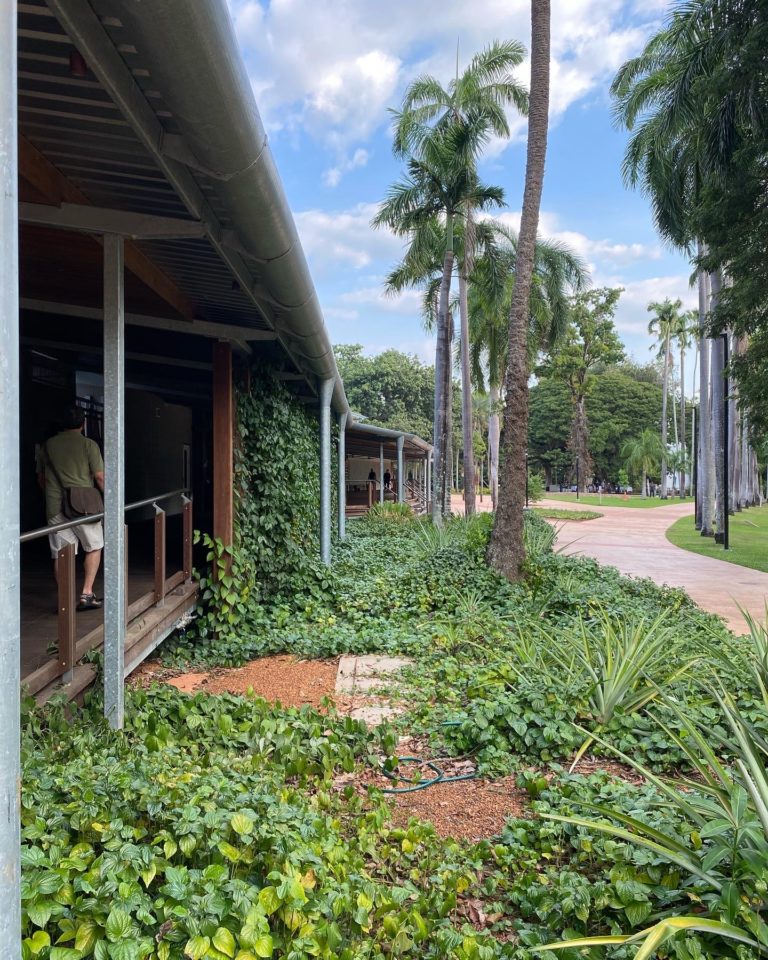
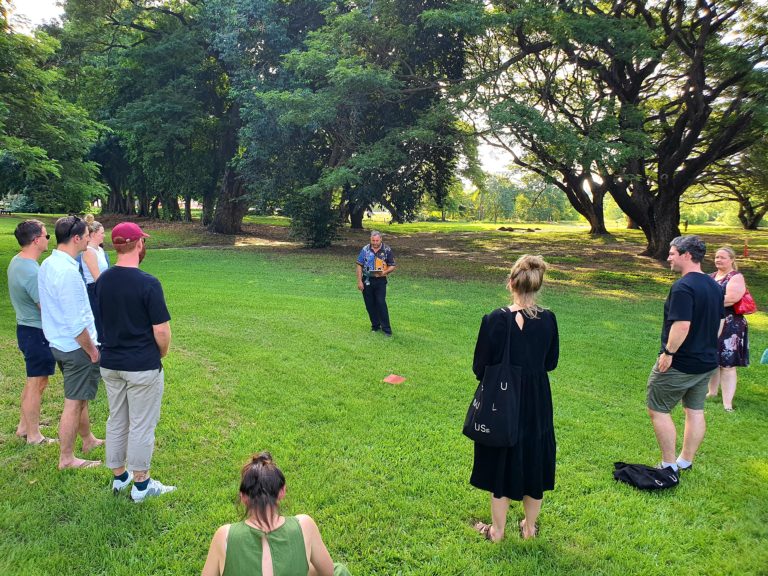
James’s initial greeting set the tone for our two day visit on Larrakia land. We met with a handful of practicing architects (Troppo, Hully Liveris, Rossi Architects, Ajar Architects) who all expressed their commitment to listening and learn from the First Nations voices of the salt-water people, who harbour a deep understanding of their country. Through listening, they aim to design buildings that protect people from the severe climatic conditions of this region and aspire to work with landscape and climate rather than against it. These commitments became a common thread that ran through the many conversations in the practice and project visits that followed.
Our first project visit took place at the George Brown Botanic Gardens Visitor and Events Centre by Architect Hully Liveris. Sited at the heart of an existing meeting place and universal access point for local First Nations people, the long and low building hugged the base of a natural amphitheatre. Hully spoke about the building being like a ‘broad hat’ with its generous open-air verandah skirting the building delivering the external spaces to the landscape. Stringy bark timber and deep red concrete enriched the space, the rustic colours of the earth providing a striking contrast to the lush green surroundings. From here we ventured to the coast, cooling off with a beverage to witness the sun setting over the water and cap off our first day in Darwin.
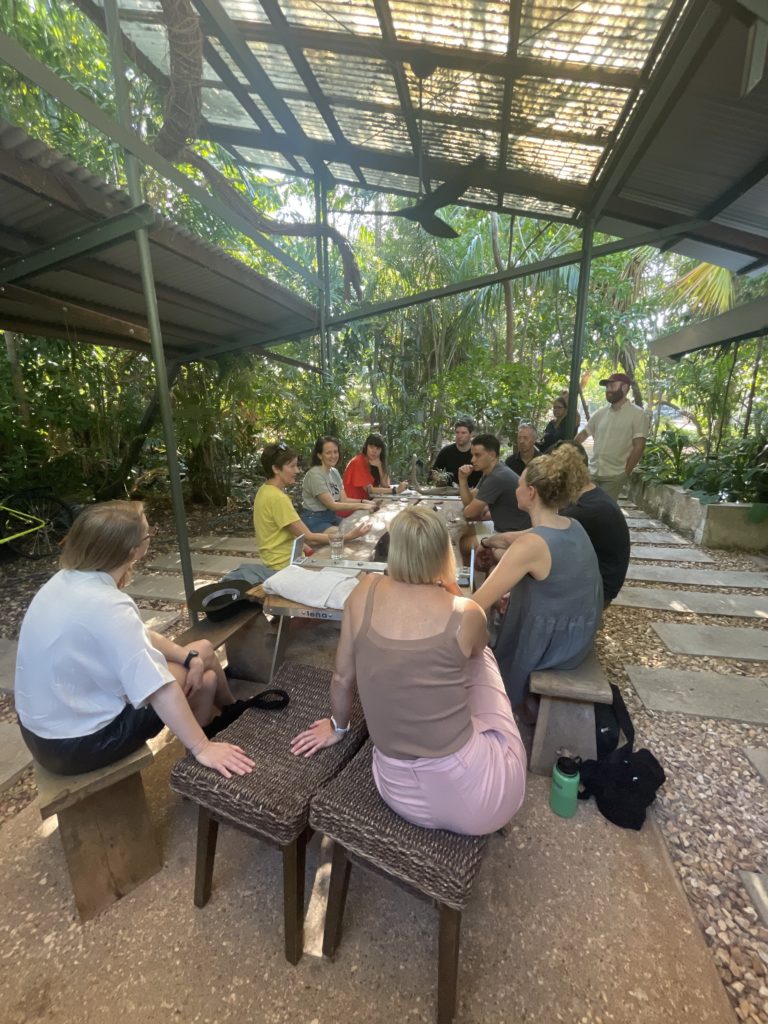
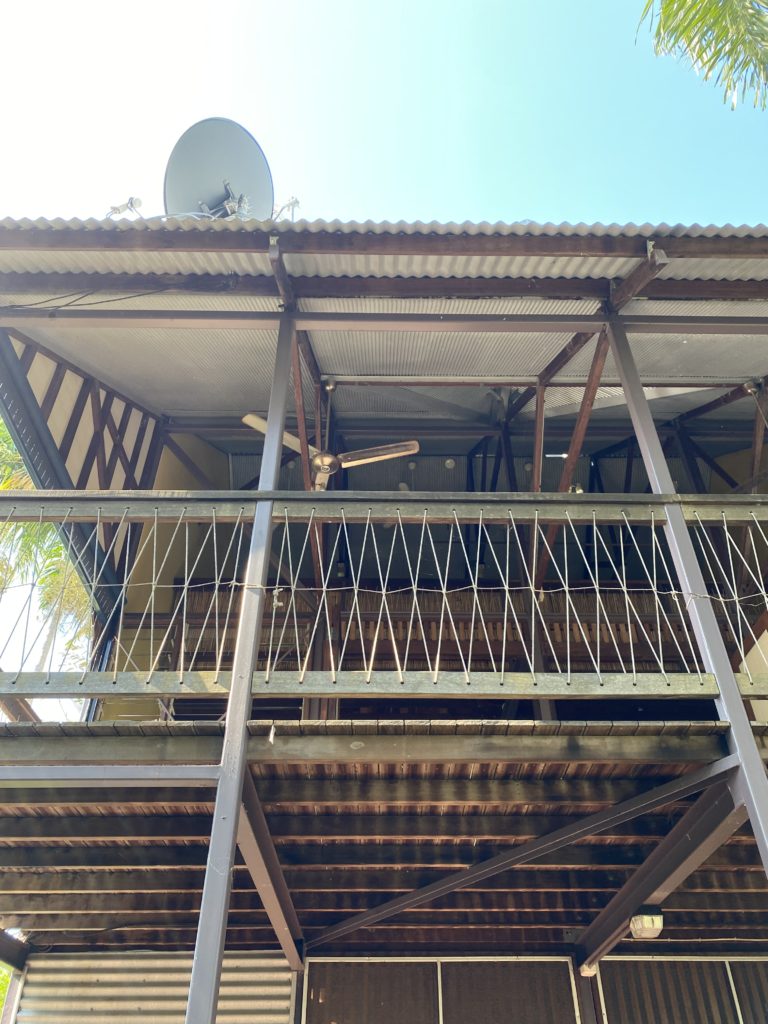
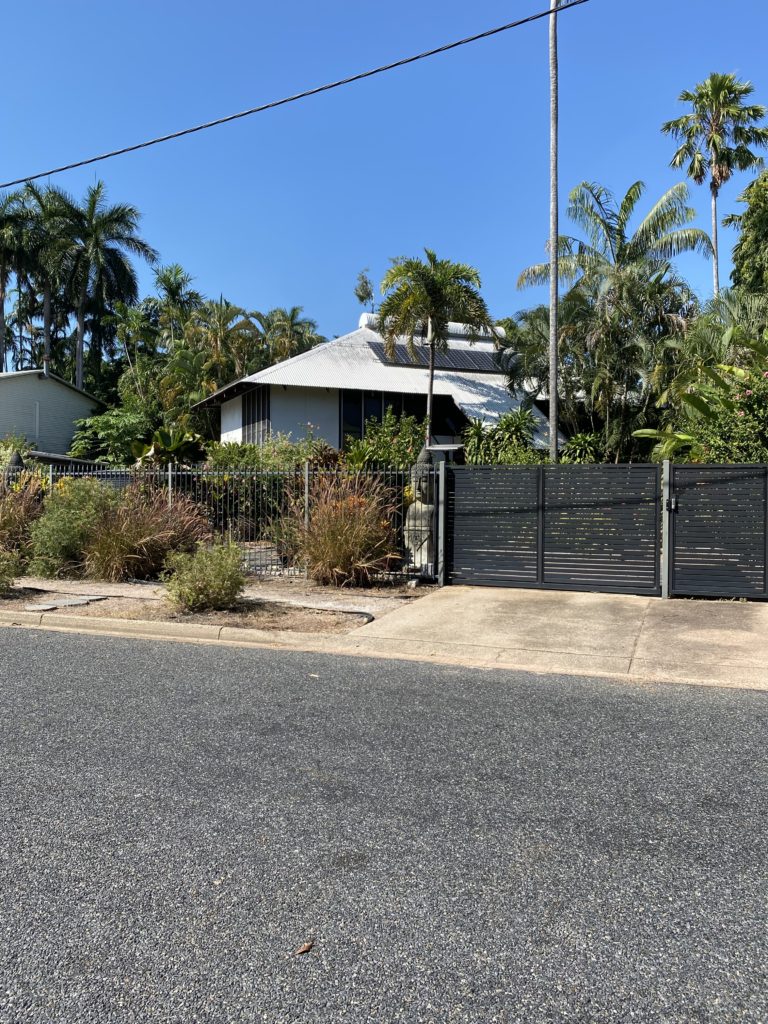
Day two in Darwin kicked off with a visit to Troppo Architects office where architects Jo Best and Katy Moir (a DST Alumni) welcomed us into their open-air meeting room. The office occupies an old public housing building nestled in tropical suburbia and the importance of the practice’s connection to people and place became instantly apparent. Jo spoke of the alterations made to the clumsy original brick building, which is now well shaded, well ventilated and makes the most of water collection and vegetation to provide a comfortable working environment for her five staff. It’s always inspiring to see architects leading by example in their own practices!
Katy and Jo shared heart-breaking stories about the battles of building in this region, where the legislation creates barriers to implementing climate responsive design “There is no mechanism in the NT to sign off passive design,” explained Jo. The cookie-cutter housing development stock currently occupying the top-end, prevalent after the devastation of cyclone Tracey, is analogous to the humble Eski – their heavy materiality, heavy energy use and lack of flexibility make keeping them cool as difficult as trying to keep a picnic lunch of mud crabs and NT draft stubbies cool on a sweltering 37-degree at the Nightcliffe foreshore. According to Katy and Jo, there is a need for modern top-end suburbia to shed its thick skins, simplify its construction methods and get back to basics.
With this in mind, we were primed to visit Troppoville, a collection of homes exemplifying this ideology and well loved by the local community. These homes are made for shade, where walls would be there are trees, instead of roofs there are leaves. Walking through the homes, built in the 80’s, we were reminded of our conversations with Hully who just a day earlier had told us that “to live in Darwin you need a really good garden and a house that works.”
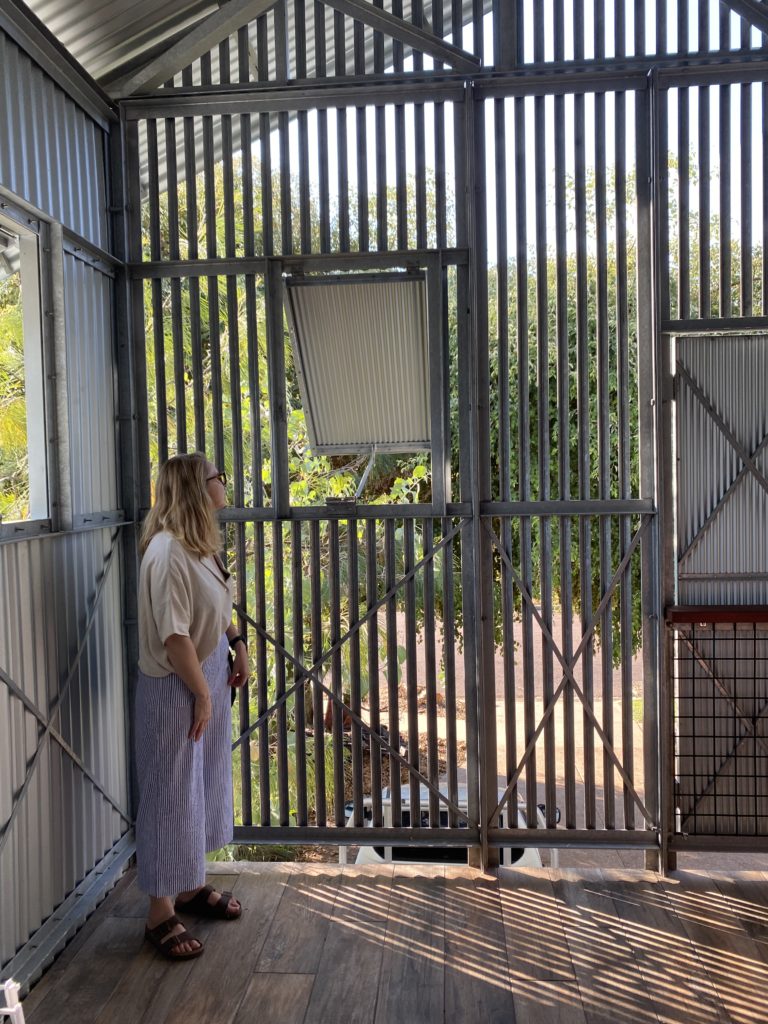
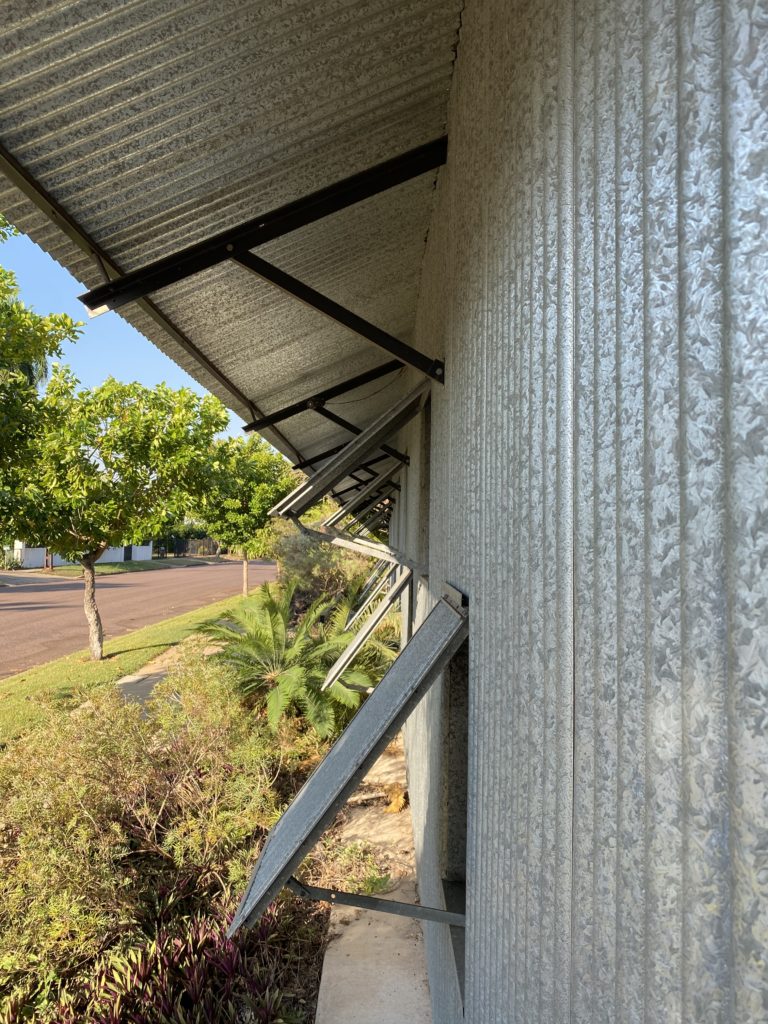
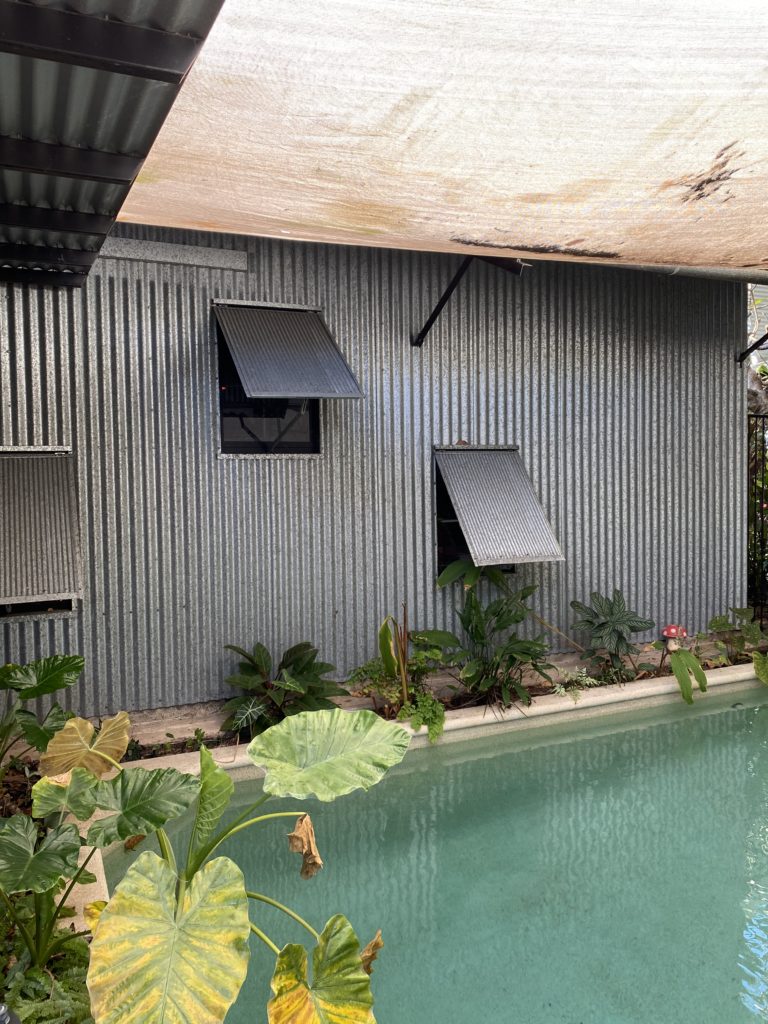
Practice visits with Rossi Architects and Jo Rees of Ajar Architects concluded our tour of Darwin. Rossi architects, a practice of five, and Jo, a sole practitioner, both spoke about community being at the core of their projects.
As a group we have all agreed that witnessing the diversity of Australia’s landscape, from the southern end of the country in Tasmania to the northern tropics, has been an eye-opening experience. As the tour starts to wind-down, we are reminded that the idiosyncrasies of the people and places in which we practice should be celebrated and acknowledged in our architecture. Thank you to Dulux and the AIA for bringing the traditionally international Dulux Study Tour to Australia.
Bek Verrier
